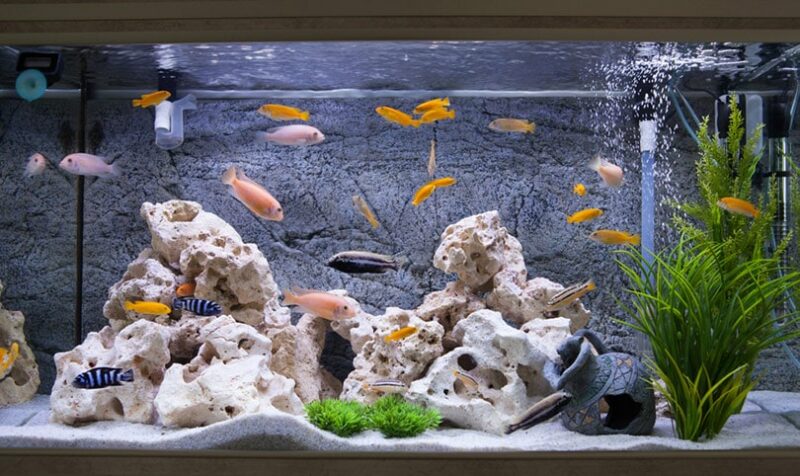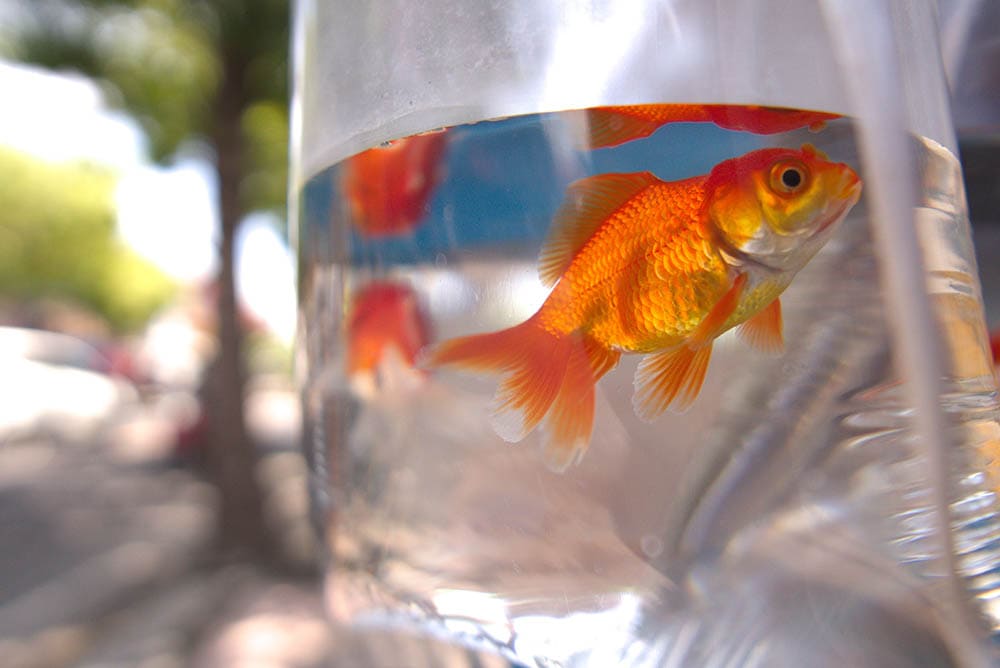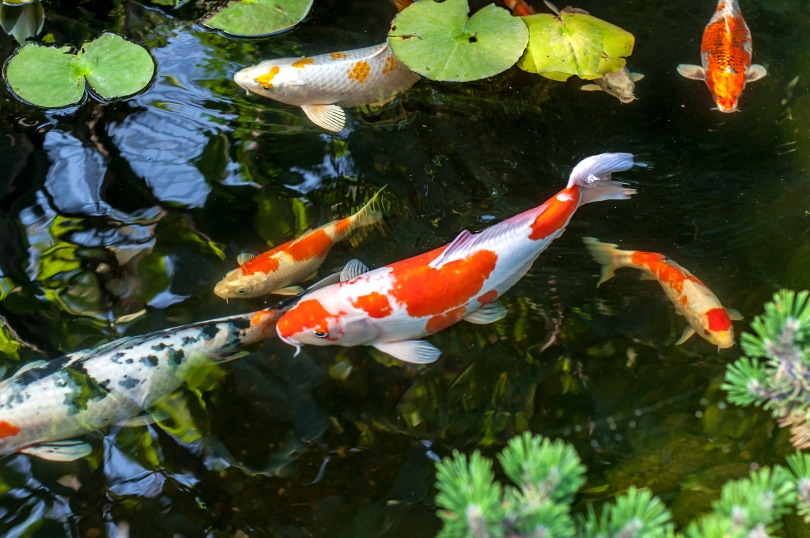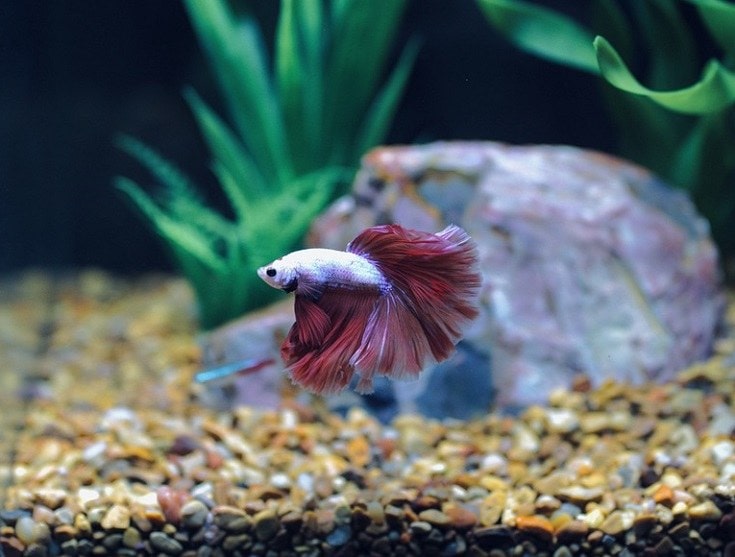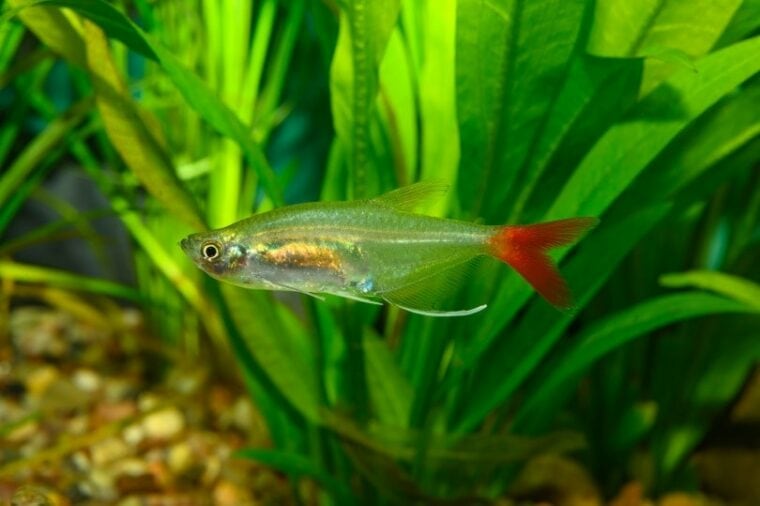
Click to Skip Ahead
Bloodfin Tetras, also known as Redfin Tetras, are small freshwater fish that are easily recognized by their appearance. The Bloodfin Tetra has vibrant red fins that stand out against their metallic silver bodies. They are relatively easy to care for thanks to their hardiness and adaptability, making them perfect for beginner fish keepers.
If you are interested in adding Bloodfin Tetras to your aquarium, this article will guide you through their care and important characteristics.
Breed Overview
Size:
Up to 2 inches long
Lifespan:
5 – 8 years
Similar Breeds:
Red Phantom Tetra, Colombian Tetra, Serpae Tetra
Suitable for:
All fish keepers
Temperament:
Social, peaceful, hardy, and adaptable
The Bloodfin Tetra is scientifically known as Aphyocharax anisitsi and belongs to the Characin family. They are a species of Tetra which are well-known in the aquarium trade industry. Bloodfin Tetras are the perfect additions to community aquariums, primarily because of their peaceful temperament and small size. They get along with numerous aquatic tank mates and are relatively healthy fish when cared for properly. Most fish keepers can successfully raise Bloodfin Tetras in an aquarium without much experience.
Bloodfin Tetra Characteristics
Bloodfin Tetra Cost?
The origins of Bloodfin Tetras date back to 1903 when they were discovered by C.H. Eigenmann and C.H. Kennedy. Bloodfin Tetras are native to South America, and their wild habitat consists of tropical waterways throughout Paraguay and northern Argentina. However, Bloodfin Tetras can also be found in Florida where they likely escaped from ornamental fish farms.
Bloodfin Tetras are found in the aquarium trade industry where they are often sold and kept as pets. They are not considered rare because of their wide availability and ease of breeding in captivity. This means that Bloodfin Tetras can be purchased from various pet stores or online retailers. Most Bloodfin Tetras cost between $2 to $5, which makes them inexpensive fish. You might come across groups of Bloodfin Tetras for sale at discounted prices when purchased together.
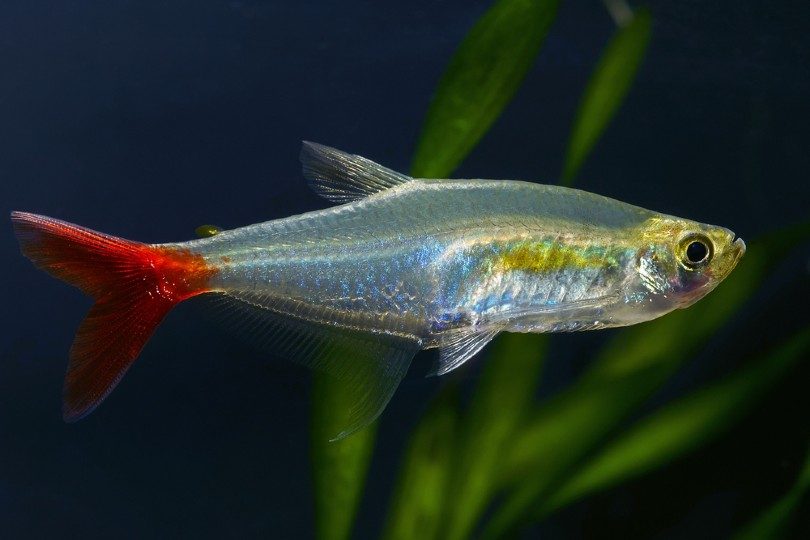
Sociability of the Bloodfin Tetra
Do These Fish Make Good Pets?
The Bloodfin Tetra’s peaceful, social, and adaptable temperament makes them the perfect pets for beginner fish keepers. They are easy to maintain in aquariums and aren’t very fussy about their tank setup and diet. However, that doesn’t mean Bloodfin Tetras do not need specific conditions to thrive. Bloodfin Tetras are naturally social schooling fish that need to be kept in groups of six or more. You cannot keep Bloodfin Tetras alone, so you need to be able to commit to caring for a group of them.
Furthermore, Bloodfin Tetras need to be kept in spacious aquariums that support their active schooling behavior. Their aquarium needs to be over 20 gallons long, and not a small vase or fish bowl. They should only be kept in mature aquariums that have been fully cycled and cannot be added to an aquarium the day it is set up. Bloodfin Tetras do not tolerate poor water quality well and may die in poorly maintained aquariums.
Does This Fish Make a Good Tankmate?
Like most Tetras, Bloodfin Tetras make excellent tank mates for compatible fish or invertebrates. Bloodfin Tetras are known to get along with most small and peaceful fish, but they can also be kept with snails or shrimp. The Bloodfin Tetra’s high sociability in aquariums is one of the main reasons they are good for community aquariums.
You generally want to avoid keeping Bloodfin Tetras with large and aggressive tank mates that require different water parameters. Bloodfin Tetras may nip at the fins of certain fish like Bettas or Long-fin Tetras so they should be avoided as tank mates.
Some of the best tank mates to pair with a school of Bloodfin Tetras are other peaceful Tetras, Ghost Shrimp, live-bearing fish, and snails.
Care Guide & Tank Set Up
Water Quality, pH, & Temperature
The most important aspect of Bloodfin Tetra care is water quality. Bloodfin Tetras need good water quality for basic survival, and it’s up to you to ensure that their water conditions are suitable for them. Bloodfin Tetras are tropical freshwater fish that need a heater in their aquarium.
Their ideal temperature range is between 70° to 82° Fahrenheit (21° to 28° Celsius). The temperature should be kept stable with a few fluctuations which can be stressful for Bloodfin Tetras. Furthermore, Bloodfin Tetras may fall ill if they are exposed to chilly temperatures for too long. The pH of the water should remain between 6.0 to 8.0, and the hardness from 54 to 447 ppm.
Bloodfin Tetras should only be kept in fully cycled aquariums with zero traces of ammonia or nitrite. The nitrate levels are safe up to 20 ppm before a water change is due.
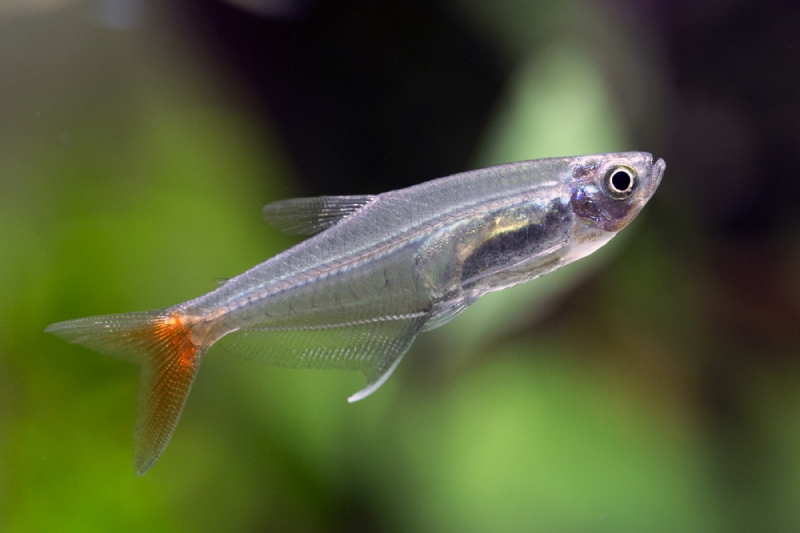
Substrate
Bloodfin Tetras appreciate substrate in their aquarium, although it is not a necessity. Sandy or fine gravel substrates are preferred because they replicate the Bloodfin Tetra’s natural environment. While you can use standard-sized gravel or pebbles as a substrate, they need to be free of toxins or harmful dyes. Natural-colored substrates are easy on the eye for Bloodfin Tetras and usually aren’t coated with dyes.
Plants
Housing Bloodfin Tetras in a planted aquarium is guaranteed to keep them active and happy. They enjoy exploring and swimming amongst live plants such as Hornwort, Vallisneria, Ludwigia, and Water Sprite. Growing multiple live plants in their aquarium is recommended because it creates a natural environment in which Bloodfin Tetras feel secure. Plus, live plants offer other benefits like water purification and increased oxygenation that shouldn’t be overlooked.
Lighting
Bloodfin Tetras are diurnal fish that are active during the day and rest at night. They require around 6 to 10 hours of light during the day, and total darkness at night. Low to moderately bright aquarium lighting is fine for Bloodfin Tetras, but you want to avoid bright aquarium lighting. Bright lighting is harsh on Bloodfin Tetra’s eyes, which may make them feel stressed or unsafe in their environment.
Filtration
Running a filter in a Bloodfin Tetras aquarium is essential and plays a major role in the aquarium’s water quality. The filter will keep the water moving, and clean, and helps to aerate the water for better oxygenation. Bloodfin Tetras do best with a slow to moderately fast water current, so avoid filters with a strong output. Filters such as sponge, internal, hang-on-back (HOB), and under-gravel filters are suitable for Bloodfin Tetras.
Be sure that the filter can handle the number of inhabitants and the size aquarium it will be filtering. If the filter is too weak, the water could become stagnant and dirty.
Things to Know When Owning a Bloodfin Tetra:
Food & Diet Requirements
Ensuring that your Bloodfin Tetras are fed a healthy and balanced diet is important for their health. Bloodfin Tetras are naturally omnivores but lean more towards a carnivorous diet in the wild. They readily accept most live or frozen foods such as daphnia, bloodworms, baby brine shrimp, and insect larvae. However, a high-quality commercial pellet or flake food should be offered daily. That is where Bloodfin Tetras will get most of the essential vitamins and minerals they need to be healthy.
Regardless of how varied their diet is, Bloodfin Tetras are not fussy about food. They are happy to eat most fish foods in the aquarium, even if the food is intended for one of their tank mates.
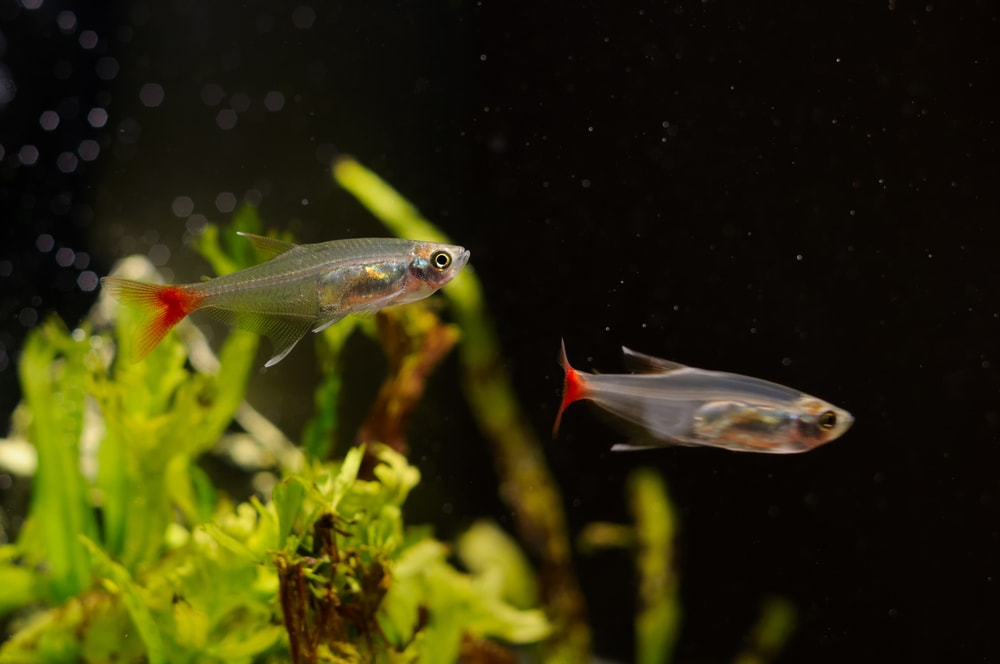
Size & Growth Rate
Bloodfin Tetras are small fish at only 2 inches long as adults. Some Bloodfin Tetras may only grow to 1.5 inches long, especially the females who are slightly longer than males. Their growth rate is quite fast, and they are fully grown before they are 1 year old. However, they mature between 4 to 6 months old and are ready to reproduce during that time.
The Bloodfin Tetras growth rate is influenced by their care, diet, and genetics. Some well-bred Bloodfin Tetras are likely to be larger than poorly-bred ones. Furthermore, Bloodfin Tetras may have delayed growth if they are fed an improper diet or kept in aquariums with poor water quality. Aquarium size may also play a role in how large Bloodfin Tetras get. If Bloodfin Tetras were kept in a tiny fishbowl with poor water quality, they are unlikely to grow very large or live long enough to reach an adult size.
Varieties
Bloodfin Tetras are characterized by their short blood-red fins, hence their names. Their bodies are elongated with a defined stomach which is more prominent in mature females. The rest of their body is metallic silver with hints of greenish blue in bright lighting. Bloodfin Tetras have a single caudal, anal, and dorsal fin, which is a distinctive red color. However, their fins may appear slightly orange at times. The rest of their fins are a semi-transparent silver color, aside from their paired ventral fins which are red.
Lifespan and Health Conditions
The average lifespan for healthy Bloodfin Tetras is between 5 to 8 years. This is longer than some other similarly sized Tetras. Several factors can affect a Bloodfin Tetra’s longevity, including their care, health, and water quality. Certain health conditions can drastically shorten a Bloodfin Tetra’s lifespan, no matter how well they are cared for. It is important to monitor your Bloodfin Tetras for signs of disease and treat them promptly.
The health conditions that may affect Bloodfin Tetras include:
Male vs Female
Male and female Bloodfin Tetras have a similar appearance which makes it difficult to tell them apart. One of the main differences is their size and stomach. Female Bloodfin Tetras are slightly larger than males and have a rounder stomach, whereas males have a slender body structure and more pronounced fins.
3 Little-Known Facts About Bloodfin Tetras
1. Female Bloodfin Tetras leap out of the water as they are depositing eggs. This jumping behavior is an indication that your Bloodfin Tetras are ready to breed.
2. Mature male Bloodfin Tetras have bony hooks on their pelvic and anal fin rays.
3. Female Bloodfin Tetras can lay up to 800 eggs at a time which usually hatch within 25 hours.
Final Thoughts
Bloodfin Tetras are peaceful and social schooling fish that make good additions to community aquariums. They cohabit well with other small and peaceful fish, although they tend to nip at fins. Bloodfin Tetras are relatively easy to care for, which makes them suitable for beginner fish keepers.
Caring for Bloodfin Tetras is pretty straightforward, and they mainly require a spacious tank, good water quality, and a healthy diet to thrive. If you choose to get Bloodfin Tetras, keep in mind that they need to be kept in groups of six or more.
Featured Image Credit: Karel Zahradka, Shutterstock



